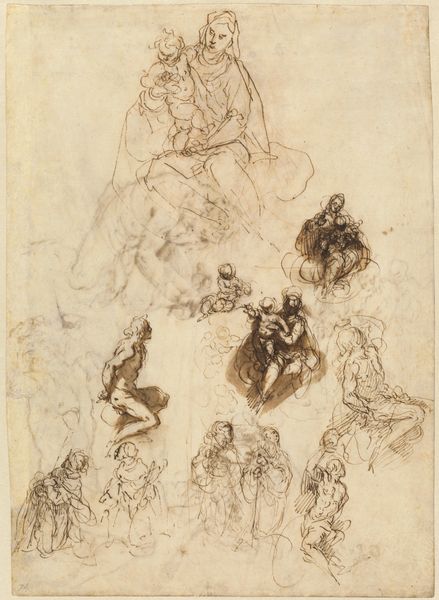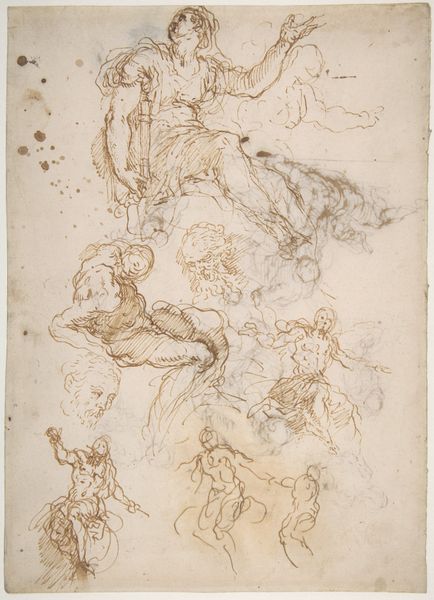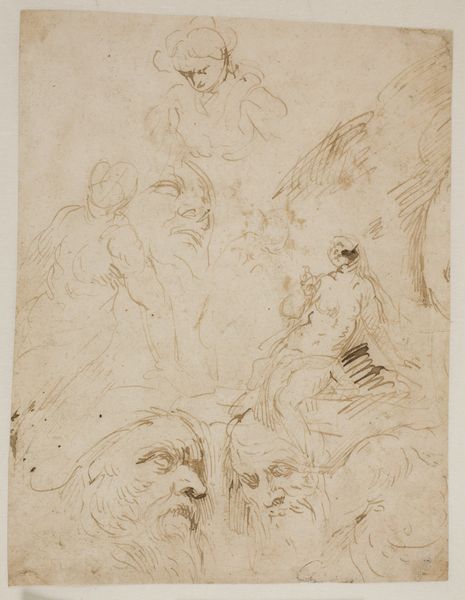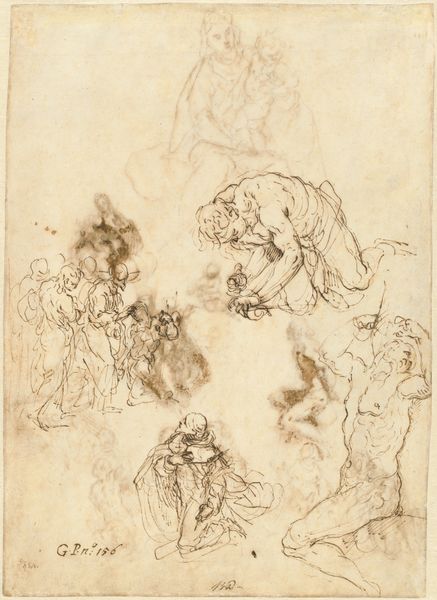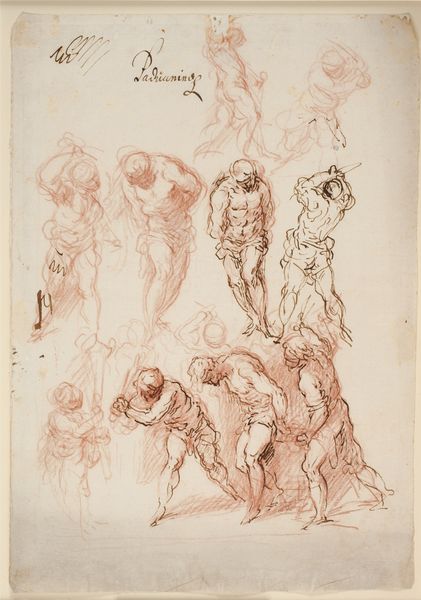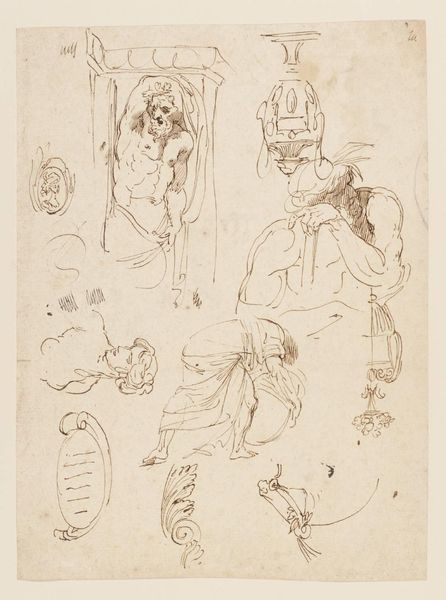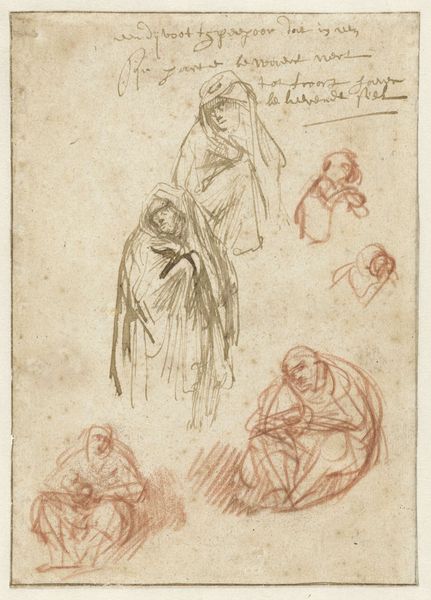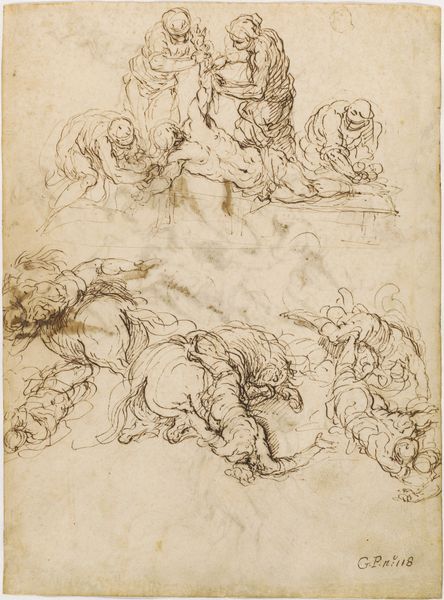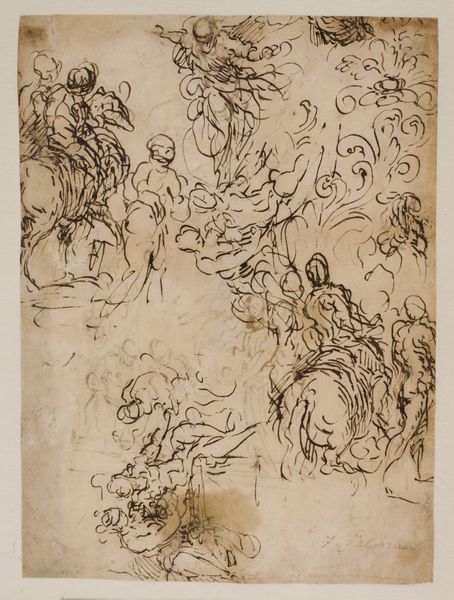
Figure Studies: The Arrest of Christ?, Christ and the Canaanite Woman, Seated Male Figures, and Head of a Child (recto); Studies of an Arm, and of the Heads of an Old Man and Young Woman (verso) 1548 - 1628
0:00
0:00
drawing, paper, ink
#
portrait
#
drawing
#
venetian-painting
#
ink painting
#
figuration
#
paper
#
11_renaissance
#
ink
#
history-painting
Dimensions: 13 11/16 x 9 3/8in. (34.8 x 23.8cm)
Copyright: Public Domain
Curator: It feels like I'm peeking into the artist's mind, doesn't it? Editor: It does. We are looking at "Figure Studies" by Jacopo Palma the Younger. Created somewhere between 1548 and 1628, it is comprised of ink drawings on paper. You find it right here at the Met. The array of sketched figures evokes so many narratives. What strikes you most about this piece? Curator: That the narratives are just possibilities—flickers of ideas rather than solid stories. The ink is so alive, you can almost see Palma working out the compositions in real-time, scratching out lines, layering new thoughts on top. The way those figures cluster around what might be the arrest of Christ. What do you think, historically? Editor: Well, Palma lived through a turbulent period, both politically and religiously. The Reformation cast a long shadow, and Venice was always navigating complex power dynamics. Seeing these biblical scenes mixed with portraits could reflect anxieties about faith and authority during his lifetime. Do the figures speak to that for you? Curator: Absolutely, especially the "Head of a Child," off-center and drawn in sanguine. There is such sweetness and fragility, such a contrast with the dramatic scenes above. Perhaps it's about innocence amidst the turmoil, or a hope for the future despite the present struggles. Editor: I agree. Placing the child so prominently within these religious studies underscores the human cost of ideological conflict. I see echoes of broader tensions concerning vulnerable populations during the period and a poignant commentary on their representation within historical and religious narratives. Palma doesn’t give us answers; he presents layers of questions, leaving it open for us to continue exploring the narrative. Curator: And it’s exactly in that space of uncertainty and potential where the art lives. A beautiful little window into Palma's artistic process and maybe, also, a little window into our own searching. Editor: Precisely. A space where historical context meets personal interpretation, where sketches on paper become a mirror reflecting the complexities of both the past and our present.
Comments
No comments
Be the first to comment and join the conversation on the ultimate creative platform.
